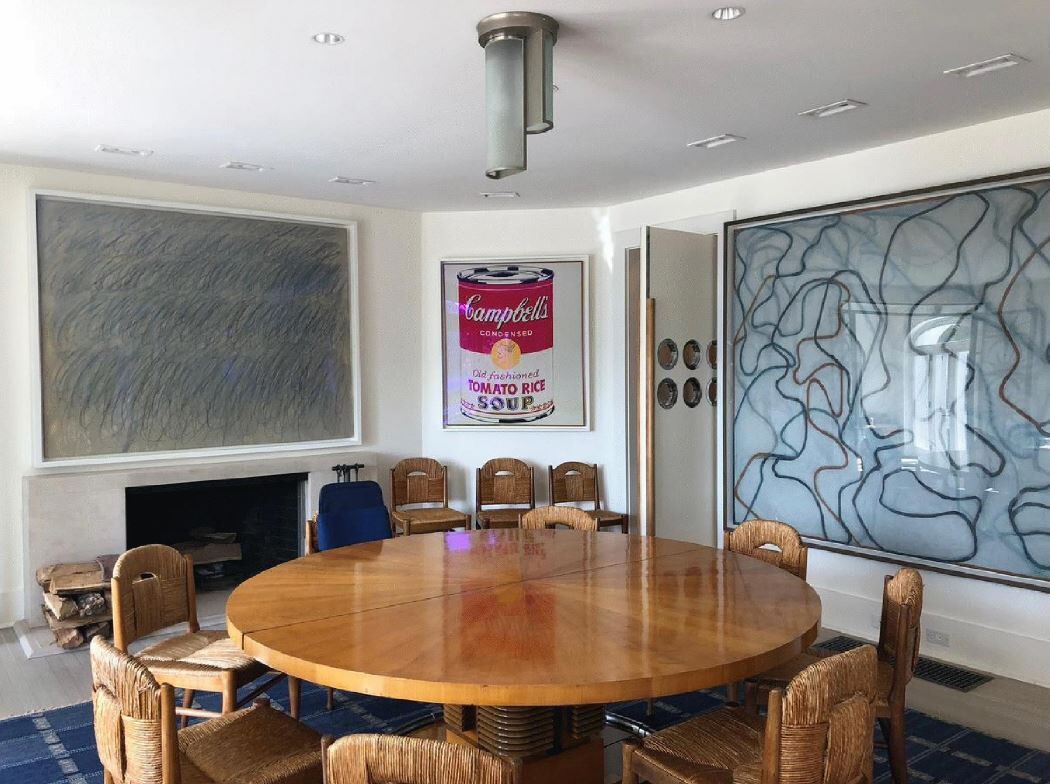
During a summary judgment hearing Wednesday in Manhattan, New York State Supreme Court Justice Joel Cohen ruled that the case between businessman Ron Perelman, who has appeared on the ARTnews Top 200 Collectors list several times, and a group of insurance companies will go to trial.
During the hearing the judge considered three motions in the lawsuit filed by Perelman, through a holding company called AGP Holdings, against a group of insurers that includes underwriters at Lloyd’s of London and AIG.
In court filings, Perelman claimed that the insurers have refused to honor his 2020 claim for coverage on five paintings—two by Andy Warhol, two by Ed Ruscha, and one by Cy Twombly—that were in his East Hampton home known as the Creeks during a 2018 fire that robbed the works of their “oomph.” “All of the pictures lost their luster, lost their depth, lost some of their definition and lost a lot of their character,” Perelman said in the complaint. The insurance companies, meanwhile, have argued in their filings that the works had “not sustained any detectable damages” as a result of the fire.
The most important summary judgment motion considered the question of whether or not the works were actually damaged in the fire. The lack of clarity over that question, Judge Cohen said, is what ultimately swayed him to move forward with a bench trial.
Perelman’s attorneys, and the experts he hired during the years-long insurance investigation, have long asserted that while damage might not be visible, the simple fact that they were in a fire means they were damaged. During the hearing, his attorneys presented testimony from Jennifer Mass, president of Scientific Analysis of Fine Art, who was hired to scientifically analyze the works. In her testimony, she said all the works sustained fire-related damage despite being in protective cases. but she can’t exactly prove what that damage is. Instead, she claimed that “the conditions of the fire would necessarily have shortened the lifetime trajectory” of the paintings. When Judge Cohen asked how the paintings could be damaged if there was no visible damage, Perelman’s lawyers referenced Mass’s testimony that the fire and the water used to extinguish it would accelerate the formation of compounds that otherwise occur naturally, shortening the paintings’ lifespan by an as yet imperceptible and incalculable degree.
This is evidence, the judge said, that he wants to hear from expert witnesses from both the plaintiff and the defense themselves at trial before he can decide whether the works have been truly damaged.
The remaining two motions dealt with the insurance investigation. The defendants have claimed in court filings that Perelman hid the fact that he was trying to sell a number of the paintings after the fire, but before he made filed an insurance claim, which, they argue would have nulled the policy because he was lying during the investigation. The insurers’ attorneys showed evidence that power collector Ken Griffin and dealer Larry Gagosian, who works with both collectors, paid a visit to the Creeks in 2020 before the claim was filed on the five works. That visit, the insurance companies have argued, is proof that Perelman lied during the investigation. After that visit, Griffin did in fact buy paintings from Perelman, one of which, Brice Marden’s Letter about Rocks #2, for $30 million, was in the same room as the Twombly and the two Warhols during the fire. That summary judgment motion was denied.
In the third motion, Perelman’s lawyers argued that the insurance companies showed bad faith during the investigation, prolonged the investigation well past the contractual 30 days it normally takes to approve a claim, and had predetermined the outcome of their investigation and ultimate denial of that claim. “But don’t you think, counselor, that this situation is complicated and warranted extra consideration?” the judge said to Perelman’s attorney. Judge Cohen then reminded him that Perelman waited two years before filing a claim on the five works in question. The judge ruled to grant the summary judgment, effectively ruling that the insurers did not act in bad faith.
The key to these proceedings is the bespoke nature of Perelman’s contract with the insurance companies. With most such contracts, a damaged painting is simply repaired by conservators at the expense of the insurance agency. If that repair affects the value of the painting, insurance pays the difference. Perelman’s agreement has an added clause stipulating that he can choose to hand a damaged painting over to the insurance company in exchange for the full amount of the insurance evaluation price, which can be four to five times more than the painting is worth.
One of the works, a Warhol “Campbell’s Soup Can” has a fair market value of $12.5 million, but is insured at $100 million. Another, Twombly’s Untitled (1971) was valued at $50 million on the fair market and is insured for $125 million. The remaining works are Warhol’s Elvis 21 Times (1962), insured for $75 million, and Ruscha’s Box Smashed Flat, Vicksburg (1960–61) and Standard Station (1966), insured for $50 million and $60 million, respectively.
The Covid pandemic significantly depreciated shares of Perelman’s company Revlon Inc. He bought the company for $1.74 billion in 1985 through a holding company. In 2023 Revlon went bankrupt. Since 2020 Perelman has sold 71 blue-chip works for $963 million through Sotheby’s auctions and private sales, works that he had been using as collateral for loans.
According to a Bloomberg report from last June, “at least nine banks had claims against Perelman’s assets, including his art collection, house in the Hamptons and various aircraft.” Following sales in 2020 of a large number of works, a private jet, and stakes in several companies, a spokesperson for Perelman said the sales “weren’t forced.”
A Perelman biographer put it more bluntly to Bloomberg: “He needs cash.”
